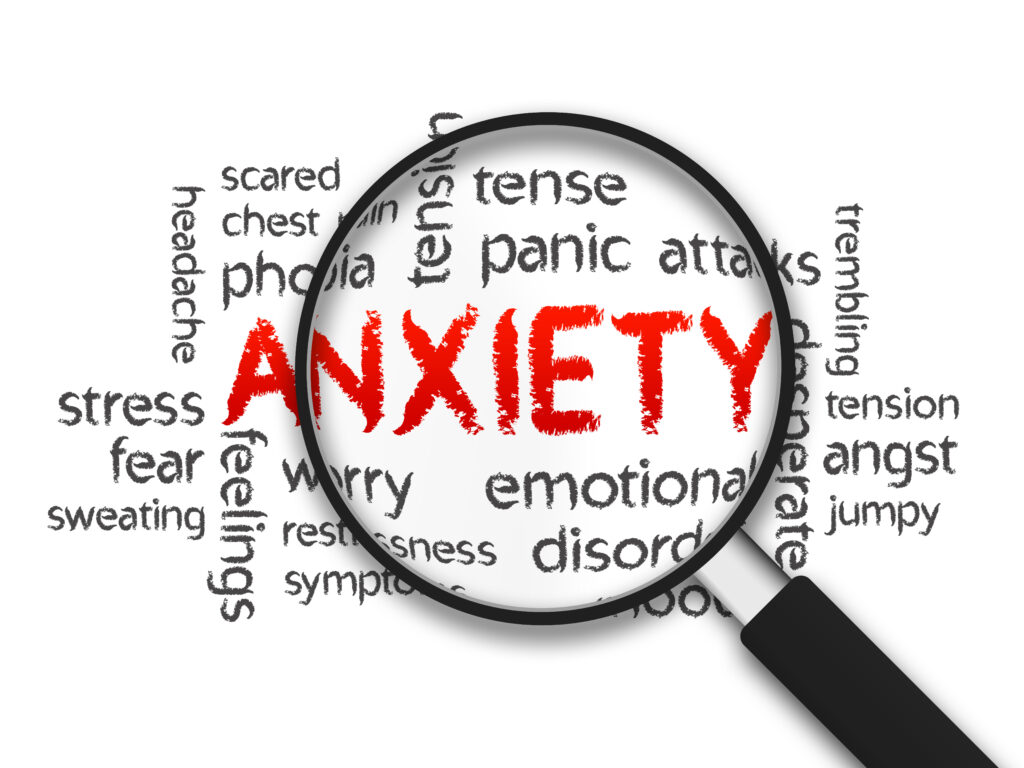EMDR Therapy – A Comprehensive Overview of the Benefits for PTSD and Trauma

EMDR Therapy and Trauma
What is EMDR Therapy?
EMDR (Eye Movement Desensitization and Reprocessing) therapy is an innovative and extensively researched psychotherapy technique designed to help people recover from trauma and Post-Traumatic Stress Disorder (PTSD) symptoms. This structured therapy facilitates the patient to focus briefly on the traumatic memory while experiencing bilateral stimulation, often through eye movements, reducing the vividness and emotional intensity of the traumatic memories.
Numerous studies have demonstrated the effectiveness of EMDR therapy in treating various disorders, including anxiety, depression, obsessive-compulsive disorder (OCD), chronic pain, addictions, and other distressing life experiences. Prestigious organisations like the American Psychiatric Association, the World Health Organization, and the U.S. Department of Veterans Affairs have endorsed EMDR as an effective treatment for trauma and PTSD.
How EMDR Therapy Works
A Unique Approach to Trauma Treatment
EMDR therapy distinguishes itself from other treatments by not requiring the patient to talk in detail about the distressing event or complete homework between sessions. Instead of focusing on altering emotions, thoughts, or behaviours resulting from the distressing issue, EMDR therapy enables the brain to continue its natural healing process.
Compared to other psychotherapies, EMDR can often be completed in fewer sessions, making it an appealing choice for those seeking rapid resolution of unprocessed traumatic memories in the brain.
The Impact of EMDR Therapy on the Brain
Our brains have an innate ability to recover from traumatic memories and events. This process involves the interaction between the amygdala (the alarm signal for stressful events), the hippocampus (which helps with learning and memories about safety and danger), and the prefrontal cortex (which regulates behaviour and emotion). However, in some cases, traumatic experiences may not be processed without intervention.
EMDR aids the brain in processing these memories, allowing normal healing to resume. The traumatic experience is still remembered, but the fight, flight or freeze response from the original event is resolved.
Who Can Benefit from EMDR Therapy? (PTSD)
EMDR can benefit children and adults of all ages. Clinicians utilise EMDR to address a wide range of challenges, including:
- Anxiety, panic attacks, and phobias
- Chronic illness and medical issues
- Depression and bipolar disorders
- Dissociative disorders
- Eating disorders
- Grief and loss
- Pain
- Performance anxiety
- Personality disorders
- PTSD and other trauma-related issues
- Sexual assault
- Sleep disturbance
- Substance abuse and addiction
- Violence and abuse
The Importance of Effective Treatment by Trained EMDR Therapists
EMDR therapy is a mental health intervention and should only be offered by properly trained and licensed mental health clinicians. Self-administered or “do-it-yourself” EMDR therapy is not recommended or supported by professional organisations like EMDRIA (Eye Movement Desensitization and Reprocessing International Association).
The Origins of EMDR Therapy
In the late 1980s, Dr Francine Shapiro discovered a connection between eye movement and persistent upsetting memories. This personal insight led to the development of EMDR therapy as a formal treatment process. Despite initial scepticism, EMDR therapy has been proven effective in randomised clinical trials, case studies, and millions of clinical hours treating trauma and trauma-related disorders worldwide.
Celebrities like Prince Harry and Sandra Bullock have openly discussed their favourable experiences with EMDR therapy, further contributing to the public acceptance of this innovative treatment approach.
What to Expect in an Inpatient EMDR Therapy Program
The Inpatient Experience
An inpatient EMDR therapy program offers clients a supportive, structured environment to address their traumatic experiences. The program typically includes individual and group therapy sessions, focusing on EMDR therapy as the primary treatment modality. Additionally, clients may participate in complementary therapies such as art therapy, music therapy, yoga, and mindfulness practices to enhance their overall healing process.
The Phases of EMDR Therapy
EMDR therapy generally follows an eight-phase treatment approach:
- History-taking and treatment planning: The therapist gathers information about the client’s history and identifies the traumatic memories to target in therapy.
- Preparation: The therapist helps the client develop coping strategies and self-soothing techniques to handle emotional distress.
- Assessment: The therapist and client identify the specific aspects of the traumatic memory to address, including negative beliefs, physical sensations, and emotions.
- Desensitisation: The client focuses on the traumatic memory while simultaneously experiencing bilateral stimulation (e.g., eye movements), reducing the emotional intensity of the memory.
- Installation: The therapist helps the client replace negative beliefs with positive, adaptive beliefs.
- Body scan: The client scans their body for any residual physical sensations related to the traumatic memory and addresses them using EMDR techniques.
- Closure: The therapist ensures the client feels stable and calm before leaving the session.
- Reevaluation: In subsequent sessions, the therapist checks on the client’s progress and continues to address any remaining traumatic memories.
EMDR Therapy in Comparison with Other Therapies
EMDR therapy holds a unique position in the realm of psychotherapy. It’s a breath of fresh air for those who find it challenging to articulate their traumatic experiences, a common requirement in traditional talk therapies. EMDR therapy allows individuals to process these disturbing events without the need for detailed discussion, making it a more comfortable option for many.
In contrast to Cognitive Behavioural Therapy (CBT), which is another popular treatment for PTSD, EMDR therapy doesn’t solely focus on altering negative thoughts related to the traumatic event. Instead, it aims to alleviate the emotional distress linked to traumatic memories through bilateral stimulation, such as eye movements.
However, it’s crucial to remember that therapy isn’t a one-size-fits-all solution. The effectiveness of a therapy can vary greatly depending on an individual’s specific needs, their comfort with the therapy approach, and the nature of their traumatic experiences.
Insights from Experts on EMDR Therapy
To shed more light on EMDR therapy, we’ve gathered insights from several mental health professionals who specialise in this treatment approach. Here’s what they had to say:
Dr Jane Simmons, a licensed psychologist and EMDR therapist, shares, “EMDR therapy has truly transformed the way we approach trauma. Its unique ability to help individuals process traumatic memories without the need for detailed discussions is a game-changer, particularly for those who find it hard to verbalise their experiences.”
Dr Michael Patterson, a clinical psychologist and EMDR Europe accredited consultant, adds, “EMDR works by helping the brain to process stuck memories from traumatic events. It allows individuals to develop a new perspective on the past event and reduce its impact on their lives.”
Keeping Up with EMDR Research
Staying updated with the latest research on EMDR therapy is crucial to ensure that the information we provide is accurate and up-to-date. Recent studies continue to support the effectiveness of EMDR therapy in treating PTSD and other trauma-related disorders.
For instance, a study published in the Journal of Psychiatric Research found that EMDR treatment significantly reduced PTSD diagnosis and symptoms, depression, anxiety, and subjective distress in PTSD patients. Another study in the Journal of Nervous and Mental Disease reported that EMDR therapy resulted in significant improvements in PTSD symptoms, negative beliefs, depression, and quality of life.
These findings underscore the potential of EMDR therapy as a powerful tool in the treatment of trauma and PTSD. As research continues to evolve, we can look forward to gaining even more insights into how EMDR works and how it can be further optimised to help individuals heal from their traumatic experiences.
The Road to Recovery
EMDR therapy is an effective trauma treatment, offering hope and healing to countless individuals who have experienced distressing life events. By participating in an inpatient EMDR therapy program, clients can benefit from the expertise of trained therapists, a supportive environment, and a comprehensive approach to addressing their trauma-related issues. With commitment and perseverance, clients can overcome their past experiences and move forward toward emotional well-being.
Frequently Asked Questions (FAQs) About EMDR Therapy
1. What is EMDR therapy, and how does it work?
EMDR (Eye Movement Desensitization and Reprocessing) therapy is a structured therapy that encourages the patient to focus briefly on the trauma memory while simultaneously experiencing bilateral stimulation, typically in the form of rapid eye movements. This process helps to reduce the emotional distress associated with traumatic memories.
2. How effective is EMDR therapy in treating PTSD?
EMDR therapy is recognised as an effective treatment for PTSD by numerous health organisations, including the American Psychiatric Association, the World Health Organization, and the U.S. Department of Defense. Studies have shown that EMDR therapy can significantly reduce PTSD diagnosis and symptoms, depression, anxiety, and subjective distress in PTSD patients.
3. What does an EMDR therapy session involve?
EMDR therapy involves an eight-phase treatment approach. During the desensitisation phase, which is the third phase of EMDR, the therapist will ask the patient to hold different aspects of the traumatic event or thought in mind and to use their eyes to track the therapist’s hand as it moves back and forth across the patient’s field of vision. This process helps to change the way the patient’s brain processes the trauma.
4. How does EMDR therapy compare to other forms of therapy?
Unlike traditional talk therapies, EMDR therapy does not require the patient to talk in detail about the distressing event or complete homework between sessions. EMDR therapy can often be completed in fewer sessions, making it an appealing choice for those seeking rapid resolution of their trauma and PTSD symptoms.
5. Who can benefit from EMDR therapy?
EMDR therapy can benefit children and adults of all ages. It has been used to treat a wide range of challenges, including anxiety, panic attacks, phobias, chronic illness and medical issues, depression and bipolar disorders, dissociative disorders, eating disorders, grief and loss, pain, performance anxiety, personality disorders, PTSD and other trauma-related issues, sexual assault, sleep disturbance, substance abuse and addiction, violence and abuse.
6. How many EMDR sessions are typically needed?
The number of EMDR sessions needed can vary depending on the individual and the nature of their trauma. However, a typical course of treatment usually involves 12 sessions associated with the trauma.
7. Are there any side effects of EMDR therapy?
EMDR therapy is generally considered to be a safe and effective therapy. However, as with any form of therapy, there may be potential side effects. These can include heightened awareness of emotions, temporary increases in distressing dreams or memories, and physical sensations during or after therapy, such as light-headedness or nausea. It’s important to discuss any concerns with your therapist before starting treatment.
8. Can I try EMDR therapy on my own?
No, EMDR therapy should only be administered by a trained professional. Self-administered or “do-it-yourself” EMDR therapy is not recommended or supported by professional organisations like EMDRIA (Eye Movement Desensitization and Reprocessing International Association).
Subscribe to our newsletter.
Subscribe to our newsletter and join a supportive community dedicated to understanding, overcoming, and transforming personal trauma.
Related Articles
Understanding And Addressing Generational Trauma: Signs, Causes, And Healing Strategies
Breaking the Cycle: A Guide to Healing Generational and Intergenerational Trauma Feeling overwhelmed by unresolved issues and patterns plaguing your…...
12 Types of Anxiety Disorders
"Anxiety is the dizziness of freedom." - Søren Kierkegaard Anxiety disorders are more than just occasional…...
Dopamine addiction: How worried should you really be?
Dopamine Complex Role in Addiction Dopamine plays a complex and often misunderstood role in substance addiction…...
Exploring The Benefits Of Mindfulness And Body-Based Practices: A Comprehensive Guide
Introduction: Are you looking to improve your mental and physical health but don't know where to…...



